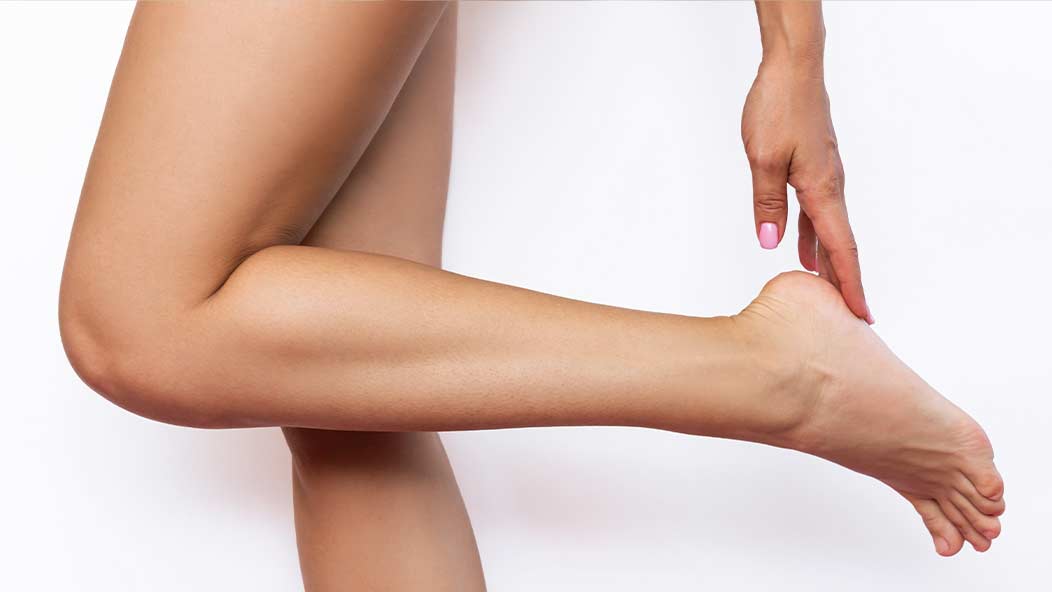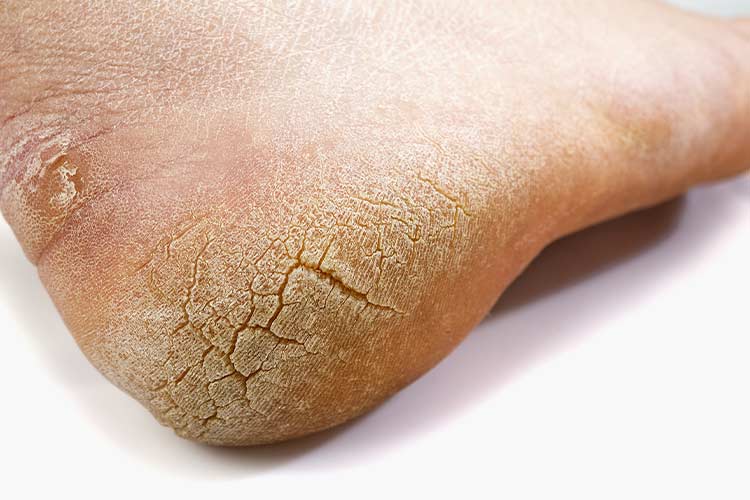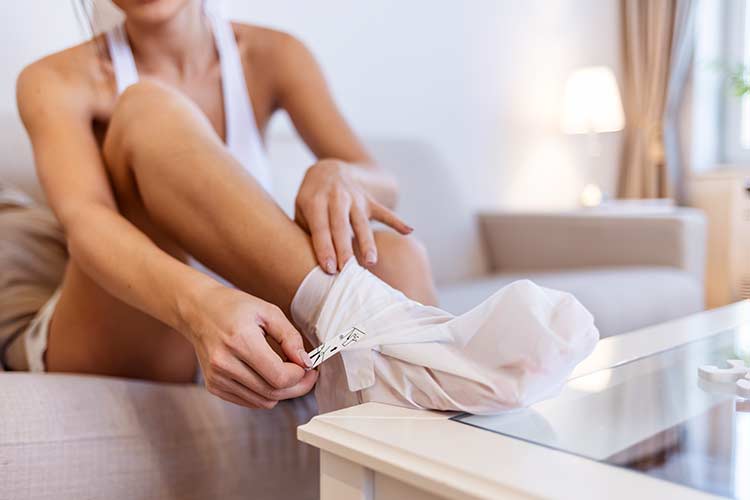Join Our eNewsletter!
Subscribe to our monthly newsletter to receive encouraging advice to help you lead a healthy lifestyle.

Well-Heeled: How to Treat Cracked Heels
Many of us don’t pay much attention to our feet, especially the bottoms and heels, until one day we look down and notice that our heels are dry and the skin is cracked. Depending on how severe and deep the cracking is, it can be a disturbing sight. In some cases, the cracks (or fissures) can cause discomfort or pain and can even become infected. Thankfully, there are ways to treat your dry, cracked heels and even prevent them from developing fissures.

Causes of Cracked Heels
It’s helpful to know what causes cracked heels so you can avoid them. Typically, dry, cracked heels can be traced back to:
- Wearing shoes that don’t fit properly or that don’t sufficiently support the heels.
- Standing for long periods of time.
- Living in a cold or dry climate.
- Excessively walking around barefoot or in open-back sandals.
- Taking long, hot showers or baths frequently.
- Using soaps that strip the skin of natural oils.
- Not moisturizing your feet regularly.

Sometimes medical conditions can contribute to heels becoming dry and cracked. These include:
- Diabetes
- Nerve damage
- Vitamin deficiency
- Fungal infection
- Hypothyroidism
- Psoriasis
- Obesity
- Atopic dermatitis
How to Treat Cracked Heels at Home
There are several at-home treatments that can help soften the skin on your heels and alleviate cracking if the fissures are mild to moderate (not yet causing pain or bleeding). Even if your heels aren’t yet cracking, you can start treating the dry, thick skin that develops prior to fissures with just a few minutes of extra care each day. You can also follow these steps:
- Soak your feet for about 10 to 15 minutes in warm (not hot) water. You can add soap if you like, but make sure it’s a gentle, hydrating soap. Pat your heels dry with a clean towel.
- Exfoliate the skin on your heels. Apply a moisturizer that contains urea and salicylic acid, if possible, and use a foot file to slough off dead skin.
- If the cracks in your heels are open fissures, you can use liquid bandage to seal them and help protect them from worsening and from infection.
- Apply petroleum jelly or a specially formulated heel balm to your heels and cover with socks made of natural materials, such as cotton or wool. The socks will help lock in the moisture.
Also, take care to avoid the causes of dry, cracked heels previously listed as much as possible.

If these at-home treatments don’t help heal your heels, if you have diabetes, or if your heels begin bleeding or causing pain, talk to your primary care doctor or a podiatry specialist about other treatment options.
Our podiatrists provide the diagnosis and treatment of foot and ankle conditions at Kelsey-Seybold Clinic locations throughout the Greater Houston area, so you’re never far from the comprehensive care you need.








